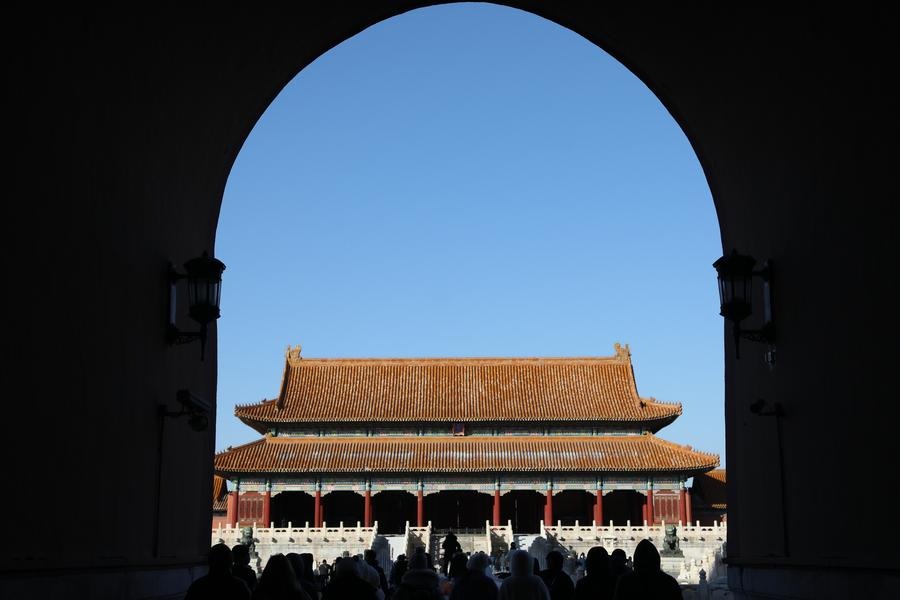Three practical boosters
More constructive and proactive approach needed to get US-China relations on a healthier trajectory


Although the world is still recovering from the sharp recession caused by the novel coronavirus outbreak in 2020, the US-China relationship remains the major risk factor in the global economic outlook for 2021.
Many people around the world believe that given the broad bipartisan support for the negative pressures marshaled by the Donald Trump administration against China, Joe Biden has no room to maneuver. But I reject that.
This is a major opportunity to reset the US-China relationship, and I suggest there is a three-pronged approach that can move the relationship forward.
First, a permanent dialogue structure is long overdue.
A full-time office that addresses all aspects of the relationship should be set up on a permanent basis. Such a secretariat could be located in a third country and should be staffed by high-level officials and researchers with the responsibility for data sharing, framing joint policy proposals and shepherding negotiations on the proposals. Once the proposals are agreed upon, the secretariat should oversee implementation, compliance and transparent dispute adjudication. The secretariat would be engaged in all aspects of the relationship from trade and technology to people exchanges.
My second recommendation regards the trade dispute itself. We live in a global interconnected world and focusing on bilateral trade imbalances is a strategy that cannot and will not work in resolving pressures that bear on individual nations. The Trump administration's fixation on solving a bilateral US-China problem missed the most important aspect of the US trade imbalance, which was that it had trade deficits with 102 countries in 2019. And while the data is not yet available for 2020, most likely it had a comparable number of bilateral deficits last year as well.
A country like the United States with a major shortfall of domestic savings needs to import surplus savings from abroad, so it runs these massive current account and multilateral trade deficits to attract foreign capital. Closing down trade with China only served to divert trade from China to higher cost foreign suppliers, in effect taxing US consumers. Therefore, my second recommendation is the Biden administration should abandon the phase one trade deal and the tariffs that underpin it and recognize that this was unworkable from the start. The purchase trajectory of China relative to the agreed upon trajectory was falling well short of the agreement. And instead, both nations should focus more on their saving issues. The US needs to save more, China needs to save less. And by doing that, it will alleviate this profusion of multilateral trade deficits on the US side, and surpluses on the Chinese side, which have become a major source of contention between the two nations. In the case of the US, boosting domestic savings is complicated right now because of the massive budget deficits it is running to address the COVID-19 related distress in its economy. But a commitment to saving more is the only effective macroeconomic strategy the US can employ to alleviate its enormous and destabilizing multilateral trade imbalances.
The third leg of the stool for resolving the US-China relationship is to shift the focus of the conflict away from bilateral trade to structural considerations. These are the contentious issues such as intellectual property rights, technology transfer, subsidies to State-owned enterprises and cybersecurity that frame an important structural agenda that needs to be negotiated between the US and China.
The best vehicle for approaching this structural agenda is a bilateral investment treaty. China recently concluded negotiations on a bilateral investment treaty with the European Union, and China and the US have long committed to a bilateral investment treaty as a means to open up access to each other's markets. The two sides were very close to signing a bilateral investment treaty at the end of the Obama administration, but the Trump administration made no progress on this. The Biden administration should restart the negotiations on a bilateral investment treaty as soon as possible.
The US and China both need stable and secure access to new sources of economic growth. It would be self-defeating if the two countries do not develop a framework that enables them to have more effective access to each other's market. A bilateral investment treaty would move from bilateral conflict and tariffs to a more multilateral approach, and critically, it would focus on the structural issues that are very contentious and need to be resolved.
There's no quick fix to diffusing the conflict that has emerged, but small steps can be taken to demonstrate a commitment to conflict resolution rather than conflict escalation. And as there has been a change of leadership in the US, there is a real opportunity to move from a climate of distrust to a climate that takes us back to a more trusting relationship.
This will require compromises from both parties. Both countries need to recognize that concessions are required from them. There will not be a one-sided surrender. That is often the most difficult thing to get across at the leadership level, especially after nearly four years of increasingly intense conflict. But it can be done. There is a lot at stake for the world economy. There is a lot at stake for both China and the US.
The author is a member of the faculty at Yale University and former chairman of Morgan Stanley Asia. He is also the author of Unbalanced: The Codependency of America and China. The author contributed this article to China Watch, a think tank powered by China Daily. The views do not necessarily reflect those of China Daily.


































